Slide Show: Bonsai Mirai Pioneers A New, High-Design Style Of Distinctly American Bonsai
The goal of Bonsai Mirai and the Artisans Cup at the Portland Art Museum: to update bonsai for a new, distinctly American generation.
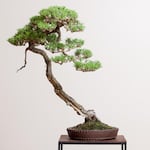
1 of 14
A Japanese Black Pine
Courtesy of Bonsai Mirai
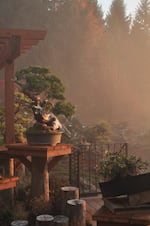
2 of 14
Courtesy Bonsai Mirai

3 of 14
Bonsai Mirai has around 1,000 bonsai trees in various states, from those just pulled from the wilderness, which require a number of years to recover before they can be shaped, to Neil's very first tree from when he was 12.
Courtesy Bonsai Mirai
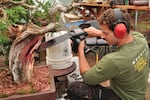
4 of 14
Bonsai artist Ryan Neil sculpts a tree with a chainsaw in his Bonsai Mirai workshop.
Courtesy Bonsai Mirai
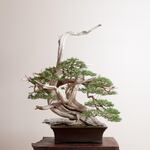
5 of 14
A Rocky Mountain Juniper
Courtesy Bonsai Mirai
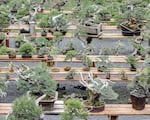
6 of 14
Most of the trees are several hundred years old, but some are up to 2,000.
Courtesy Bonsai Mirai
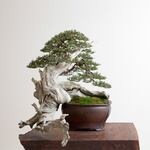
7 of 14
“This trees is changing people's impression of what bonsai can be,” says Neil. “What we’re looking at is a Rocky Mountain Juniper that is probably a 700- or 800-year-old tree. A vast portion of the deadwood hangs below the pot and towards the front of the tree, so you have a big sweep almost like a hook of contorted, twisted deadwood that frames the tree."
Courtesy Bonsai Mirai
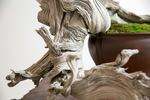
8 of 14
"In terms of an interest in preserving the wildness while respecting the technique — the artistry cannot be in question — I don't think there's a better example than this," continues Neil.
Courtesy Bonsai Mirai

9 of 14
Ryan Neil’s quest to modernize bonsai is helped by his wife, Chelsea. She brings the business savvy to Neil’s bonsai geekery. She hired one of Portland's hippest design agencies, OMFG Co., to brand Bonsai Mirai and formed a partnership with the award-winning photographer Chris Hornbecker (his work is well-known by Portlanders: he did the Timber’s Army billboards).
Courtesy Bonsai Mirai

10 of 14
"In Japan, I'm sure they would say this is not bonsai and cut this very long branch off," says Neil. "But when I purchased this piece of material, the only thing I could think is: man, how could you take this wild, undulating branch that — although it may sit outside of the dimensions of what the Japanese model says makes a bonsai — you cut that off and you lose the soul of the tree. So I think what makes the American style special is preserving the wildness and resisting the temptation to domesticate it."
Courtesy Bonsai Mirai
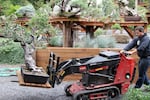
11 of 14
Neil carefully navigates a tree to his workshop for pruning using a Dingo.
Aaron Scott / OPB

12 of 14
This Engelmamn Spruce looks like it was pulled from a windy mountainside, so instead of planting the tree in a pot, Ryan and Chelsea Neil planted it in a piece of curling driftwood that looks like the wind."You're always trying to express environment," he said. "I think this is an attempt to deviate from expressing the environment and more focusing on the element that created the tree. It will be interesting to see how people respond of this."
Courtesy Bonsai Mirai
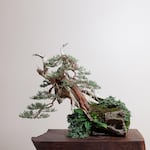
13 of 14
Courtesy Bonsai Mirai

14 of 14
One of the Artisan's Cup posters with an image by award-winning commercial photographer Chris Hornbecker. He shot the Timber's Army billboards.
Courtesy Bonsai Mirai